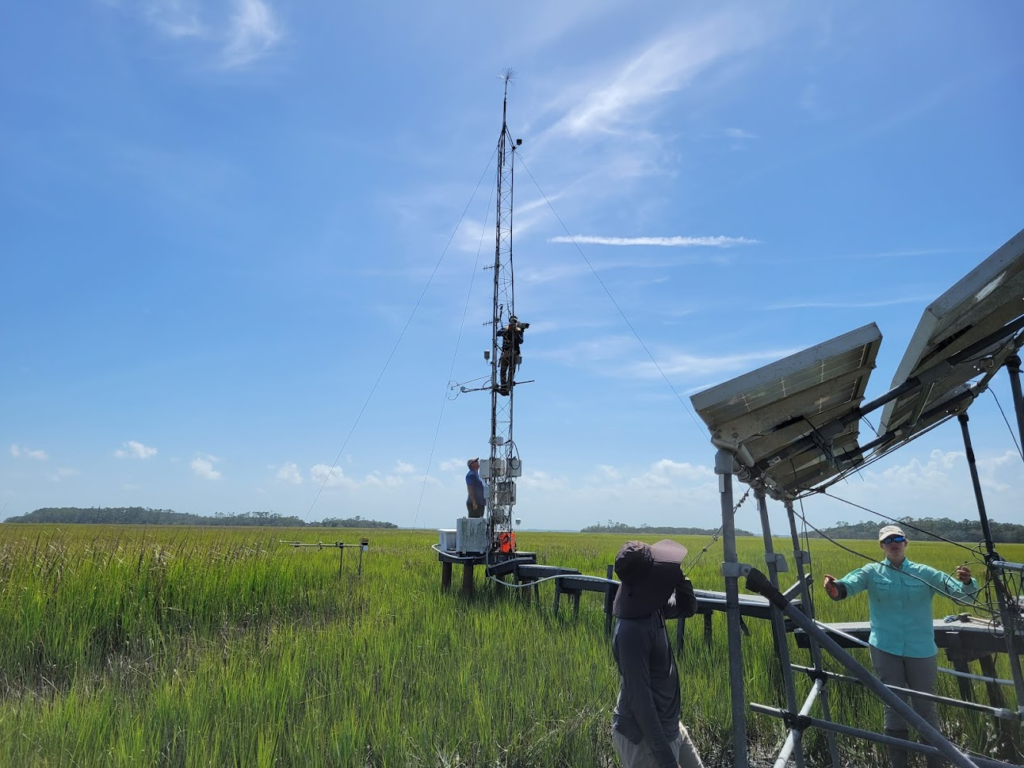A Day In the Life:
GCE-LTER Field Technicians at the UGA Marine Institute, Sapelo Island, GA
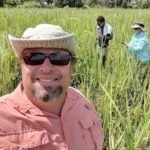
by Christopher W. Cottrell, GCE-LTER Schoolyard Participant/Mentor
As a returning member of the GCE-LTER (Georgia Coastal Ecosystems – Long Term Ecological Research) Schoolyard Program, I’ve spent countless hours trudging through marshes and slogging through swamps with various graduate students and their university professors. Very rarely, however, have I had the opportunity to spend time with the true backbone of the UGAMI (University of Georgia Marine Institute) facility…the technicians. When the opportunity arose to lend a hand fixing some essential equipment damaged during a recent tropical storm, of course I said ‘yes’!
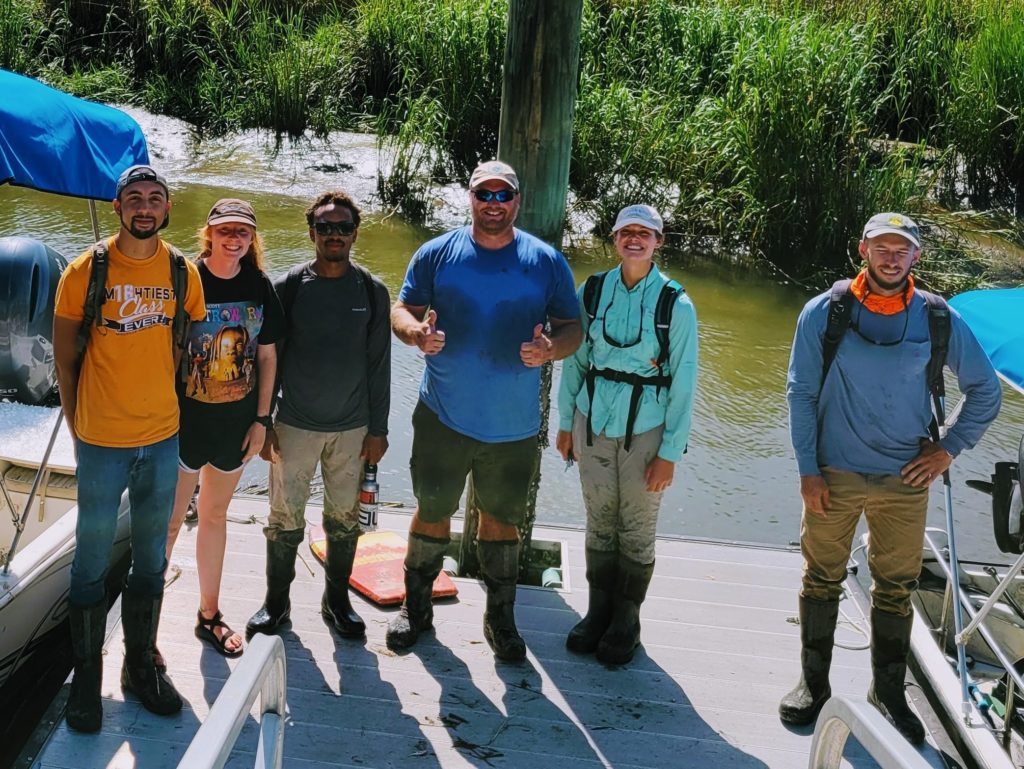
Jacob and his trusted band of technicians picked me up from the BIRL (Barrier Island Research Lab) at two o’clock in the afternoon. Everything at UGAMI is decided by the tides, and with the high tide falling it was the perfect time to get out into the marsh to get this work done. All seven of us, gear and equipment included, piled into one of the institute’s work trucks and we barreled down the barren Sapelo Island roads towards the boat dock.
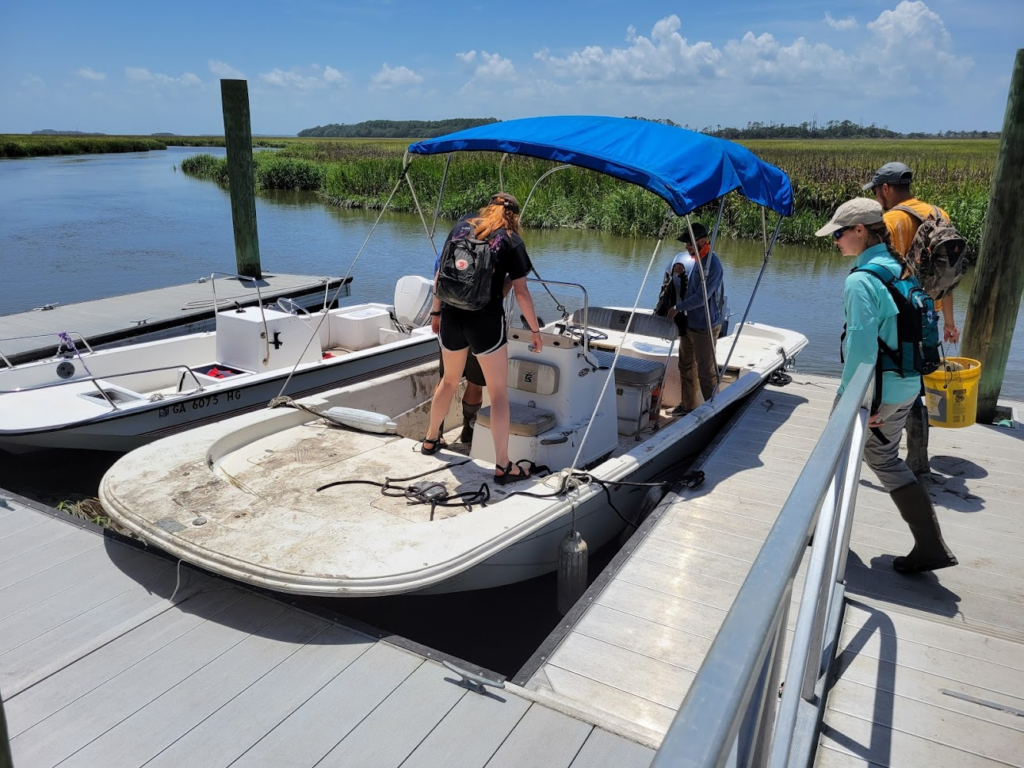
Once there, we boarded one of the small work boats and took the short ride to the repair site. You couldn’t ask for a better July day to be on the water. Not a cloud in the sky and temperatures in the mid-to-upper 80’s. This wasn’t the case a week prior when Tropical Storm Elsa moved through the area. With a storm surge at least one foot higher than a normal high tide, and sustained wind speeds of around 40 mph, conditions here were quite different.
Upon arriving at the repair site, John, who was manning the helm at the time, nosed the boat into the marsh just below the grass line. Everyone, with the exception of one, grabbed their gear and disembarked from the front of the boat directly into the marsh. Nellie, who I think had the most important job of the day, stayed aboard to ensure the boat didn’t get stuck in the mud with the outgoing tide. That can lead to a VERY long day.
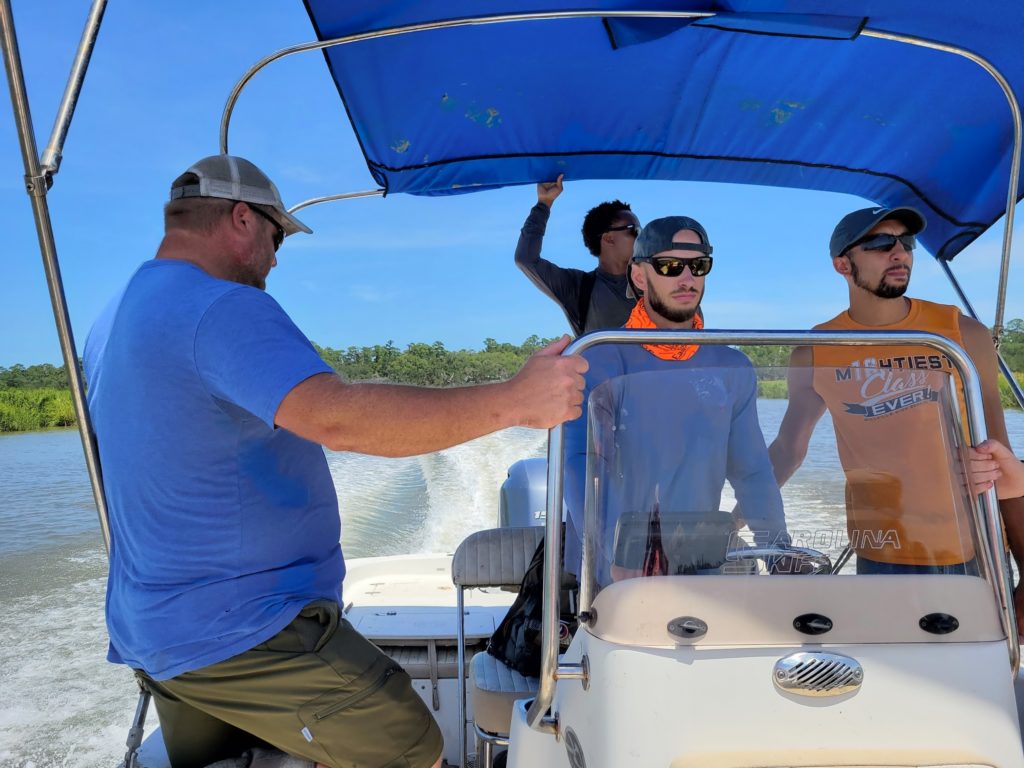
Surprisingly, only the first few steps into the marsh were soft and deep, as one might expect. The ground firmed up as we continued due to the dense mat of roots under our feet from the Spartina grass that dominates this part of the marsh. The crew made good time as we hiked the 100 yards or so to the damaged equipment.

I learned the site the technicians needed to repair is known as the ‘Flux Tower’ and is part of a global carbon dioxide monitoring system, as well as a collector of other important atmospheric data. The energy providing solar panels and framework they were supported on was damaged during the storm. It was imperative that the technicians get everything back online as quickly as possible. It was ‘go time’!
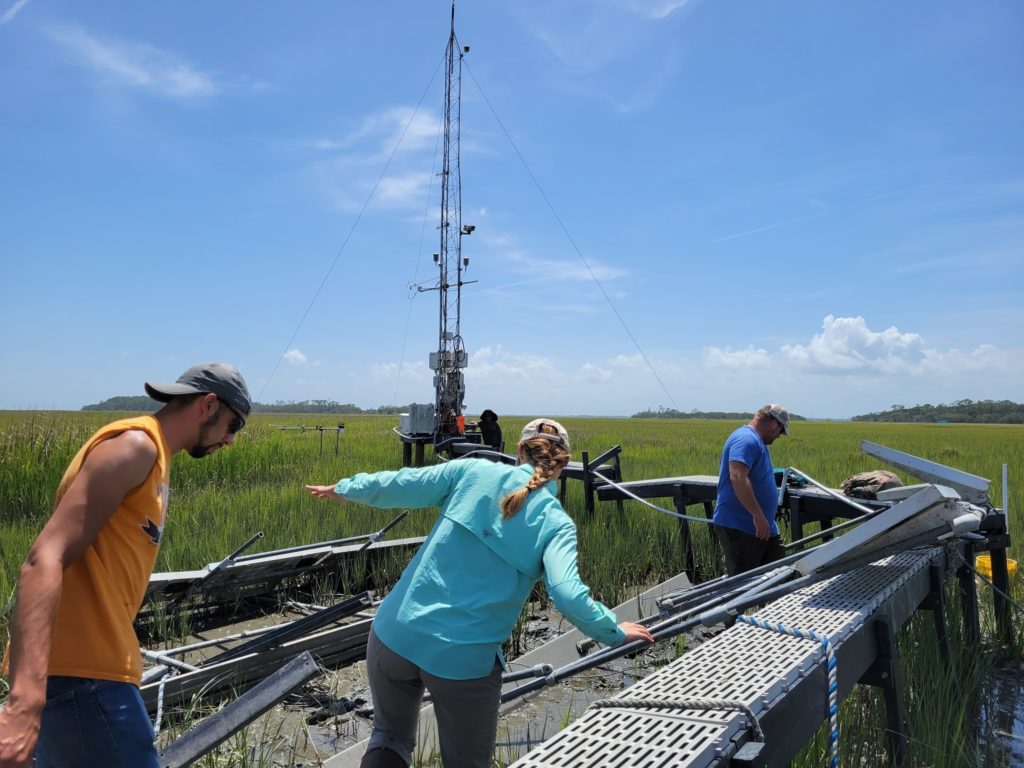
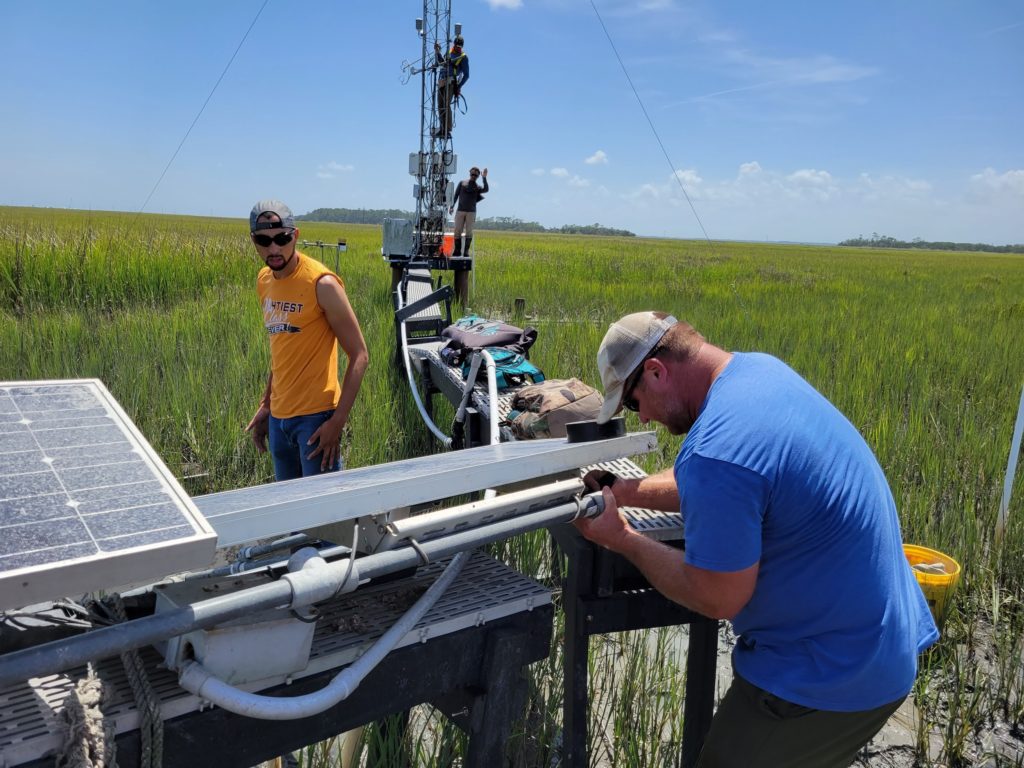
I was amazed at how well everyone worked together, much like the proverbial ‘well-oiled machine’. Each person on the crew had their own individual strengths too. John, who captained the boat earlier, geared up into some climbing equipment and made his way up the tower to repair the broken live feed camera. Jacob and Matt slogged their way over to the solar panel array and began mending the fiberglass frame poles back together. Jacob’s ‘Duct-Tape’ skills are unmatched, and in no time at all the solar panels were online temporarily pumping juice back into the equipment.
After a few quick-witted quips from Dontrece, and some much needed engineering direction by Elise, the obvious ‘brains’ of the operation, we wiped the mud off our hands and made our way back to the still floating boat. We were greeted with all smiles from Nellie before heading back to UGAMI. Just another day in the life of the GCE-LTER Field Technicians!
